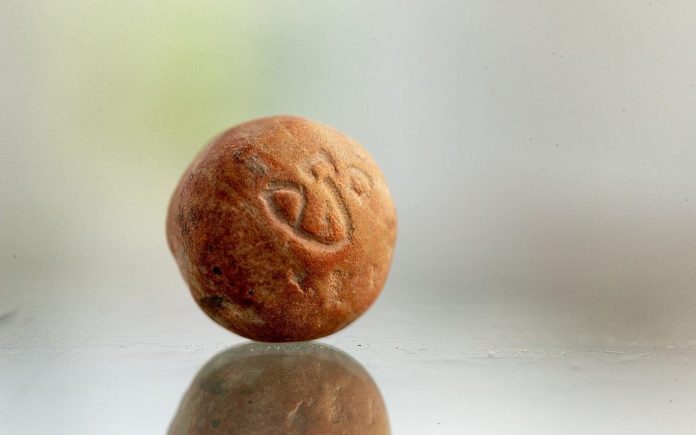Rare Weight From First Temple Period Unearthed In Jerusalem
By Ilanit Chernick • 21 November, 2018
In a rare and surprising find, a stone weight from the First Temple period has been discovered in excavations in east Jerusalem, the Israel Antiquities Authority said on Wednesday.
According to researchers, the weight was used to weigh the half-shekel donations brought to the Temple.
It was found during an archaeological soil sifting and sorting at the Emek Tzurim National Park, located in east Jerusalem near the Wadi al-Joz neighborhood.
The dirt was brought to the sifting station from an area north of the City of David, close to Robinson’s Arch near the Western Wall. The weight, which weighed in at just 11.3 grams, had the inscription “Beka” (meaning half-shekel) in ancient Hebrew, which was engraved on it. During the First Temple period such weights were used by to weigh the half-shekel donations brought to the Temple by males over the age of 20 as part of the census procedures. The half-shekel would then be used on efforts to maintain the Temple.
Archaeologist Eli Shukron, who directed the excavation on behalf of the Israel Antiquities Authority, explained that “when the half-shekel tax was brought to the Temple during the period, there were no coins, so they used silver pieces.
“To calculate the weight of these silver pieces, they would put them on one side of the scales and on the other side they placed the Beka weight,” he explained. “The Beka was equivalent to the half-shekel, which every person from the age of 20 years and up was required to bring to the temple.”
The word “beka” is found several times throughout the Bible, all in reference to the weighing of the half-shekel.
According to Shukron, such weights from the First Temple period are rare, but this weight is even rarer, because the inscription on it is written in mirror script and the letters are etched from left to right instead of from right to left.
“Therefore, it can be concluded that the craftsman who engraved the inscription was someone who specialized in engraving seals,” he explained, “Since seals were always written in mirror script so that once stamped, the inscription would appear in regular legible script.
“It seems this seal craftsman got confused when he engraved the inscription on the weight and mistakenly used mirror script as he was used to doing,” he added
Shukron highlighted that from this mistake, “we can learn about the general rule: The artists who engraved weights during the First Temple period were the same artists who specialized in creating seals.”
Excited about the find, Doron Spielman, vice president of the City of David Foundation commented that this 3,000-year-old find anchors once again “the deep historical connection of the Jewish people to Jerusalem.
“It is a reminder from our ancestors in First Temple times telling us that the State of Israel of today does not rest only on a 70-year-old United Nation’s vote, but rather, rests upon a foundation that began more than three millennia ago,” he said.
“Every single day, archaeologists in the City of David are uncovering our past and preserving our future,” Spielman concluded.






